The term safety is often used in everyday life: it is a basic need, in life or existential situations. In the traditional sense, safety means the prevention of accidents, i.e. the avoidance of unwanted events. Safety can also be seen as a fundamental value in the workplace, it is not an exaggeration to say that safety is the 6th S, which is paramount and must be given special attention.
With the introduction of 5S+Safety, we can provide a framework for reviewing, organising, optimising, identifying, and solving problems.
We are talking about this with the Assembly Engineer Vilmos Huszár. Let’s walk through the positive practices that characterise the Assembly.
WHAT WAS THE BACKGROUND AND THE MOTIVATION FOR THE INTRODUCTION OF THE 5S AT THE BEGINNING OF THE JOINT WORK?
We wanted to harmonise and standardise the sub-process area of assembly. Different tools and documents are needed in each sub-process of the Assembly. Our aim was to define a standard design for each task, which would make it easier for operators and shift leaders to do their work. With the introduction of the 5S system, we have developed a system that is easy to maintain and easy to check back. At each workstation, we have defined the tools needed, standard layouts have been developed, which make it easy to maintain the expected state.
IS IT CLEAR THAT OUR COLLEAGUES HAVE BEEN/ARE INVOLVED IN THE DEVELOPMENT AND ONGOING MAINTENANCE OF THE 5S, DO OUR STAFF IN THE FIELD UNDERSTAND AND ACCEPT THE IMPORTANCE OF THE 5S?
Yes, we held a short training session at the initial stage of the project, explaining to the people working here that it will be a long process, new for everyone, with new tasks. However we stated that the new system, as a result of the time and effort invested, would be easily accessible to everyone and bring increased efficiency in our operations. Fortunately, the initial resistance quickly turned into support, as they saw that it would be easier if everyone did certain tasks in the same way, used the tools properly, and put them back in their designated places. Perhaps the best example of this is the FIFO system in the Vacuum Dry area. Here, after overcoming initial difficulties, it took just a few weeks to get operators to do their work using the designated FIFO rows, making it easier for them to do their own task and to hand over shifts. During the last year, all our customers have pointed out that the improvement is obvious and cannot be compared with the previous situation. The openness of all production operators to the implementation and operation of the system is very important, as without them it would not be possible or could not be optimally implemented. We would also like to thank all the production colleagues for their help and positive attitude!
IN YOUR OPINION, WHAT ARE THE BENEFITS OF A WELL-RUN 5S SYSTEM AND WHAT WOULD BE THE MESSAGE?
“We have created a signboard for the 5S system that everyone can easily see in the production area.” The idea is that with the 5S system, we can work more efficiently and with less waste, thanks to a tidier, more transparent working environment. In each case, we strive to listen to the views of all 4 shifts and develop a process that is acceptable to all. Shift managers and operators are open to new ideas, so the system works well.
IN ORDER TO CHECK AND ENSURE THE EFFECTIVE OPERATION OF THE 5S SYSTEM IN THE PROCESS AREA, WHAT TECHNIQUES WERE UTILISED?
We have introduced LPA audits. Previously, we had weekly walk-throughs at Assembly, where the foremen would go around the site and correct any discrepancies found over a long weekend. This process was incorporated into the LPA. We extended it to 4 levels. LPA0 – operator self-audit, to be performed by the operator at the start of each shift. In practice, they check that the machine and the working environment are ready for production, that the necessary tools are available. At LPA1 level, the line shift leaders check the processes/areas. At LPA2 level, the engineers and team leaders carry out the checks at least once a week, and at LPA3 level, the managers carry out the checks. The differences between the shifts are constantly being levelled out, we have introduced a shift handover document, which includes the most important tasks of the shift, downtime or even scrap, and we have created photographic records of the expected status.
A LEAN DEVELOPMENT IS UNDERWAY IN THE TAB WELDING PROCESS, COULD YOU GIVE US YOUR OPINION ON THE EXPECTED IMPLEMENTATION?
Indeed, we would like to implement a KAN- BAN shelf, a tab prep table, to minimise the mess and unnecessary preparation of raw materials. The development will allow a defined amount of feedstock to be placed next to the TW machine, ensuring that it is used in the correct sequence, and thus simplifying waste management. A related aim is to develop a layout for the feedstocks in the separator corridor that will ensure a more efficient FIFO system than at present. We would like to develop a similar system to the one already in operation in the electrolyte tempering room.
This is an excellent idea, and I am confident that it can be implemented in the near future. The experience and expertise you have shared with us in implementing and maintaining 5S is exemplary.
As a system, 5S is a time-consuming and communicative process that should not be rushed, because if we do not lay enough groundwork for its introduction, there is a high chance of backsliding later.
The nature of the activity requires constant monitoring and regular audits. One of the most important factors in the implementation of 5S was the cooperation of our members, supported by a series of carefully structured training sessions. 5S works when there is a commitment to safety in the workplace and in the field, and this of course includes personal protective equipment to protect the health of our employees from potential hazards at workstations.
Thank you to István Szabó, Area Manager, Vilmos Huszár Process Engineer, István Sörös General Shift Leader and of course all the members of the Assembly for running the 5S system!
Róbert Ungvári
Assembly lean coordinator


